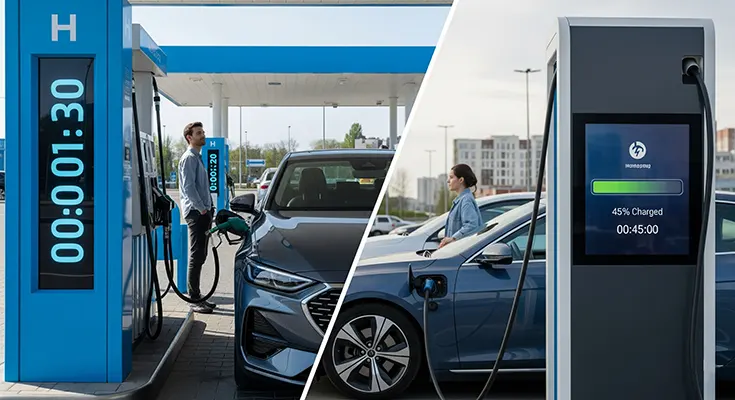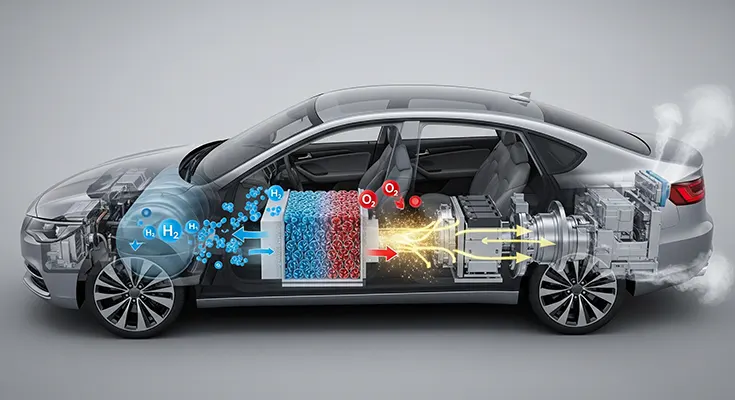When it comes to the future of transportation, the debate between hydrogen fuel cell vehicles (FCEVs) and battery electric vehicles (BEVs) is often framed around a single, critical factor: refueling time. While BEVs require a patient wait at a charging station, a hydrogen-powered vehicle can be back on the road in minutes. This significant difference is not a matter of luck but is rooted in the fundamental physics and engineering of each technology.
The core reason for this speed advantage is that FCEVs are designed to be “fueled,” while BEVs are “charged.”
The Physics of Fueling vs. Charging
Hydrogen Fueling: The High-Pressure Flow
Hydrogen fuel cell vehicles store hydrogen gas in high-pressure tanks, typically at 700 bar (10,000 psi). The refueling process is essentially a high-tech version of filling a gas tank:
- Pressurized Transfer: A pump at the hydrogen station compresses and cools the hydrogen gas.
- Dispensing: A specialized nozzle


